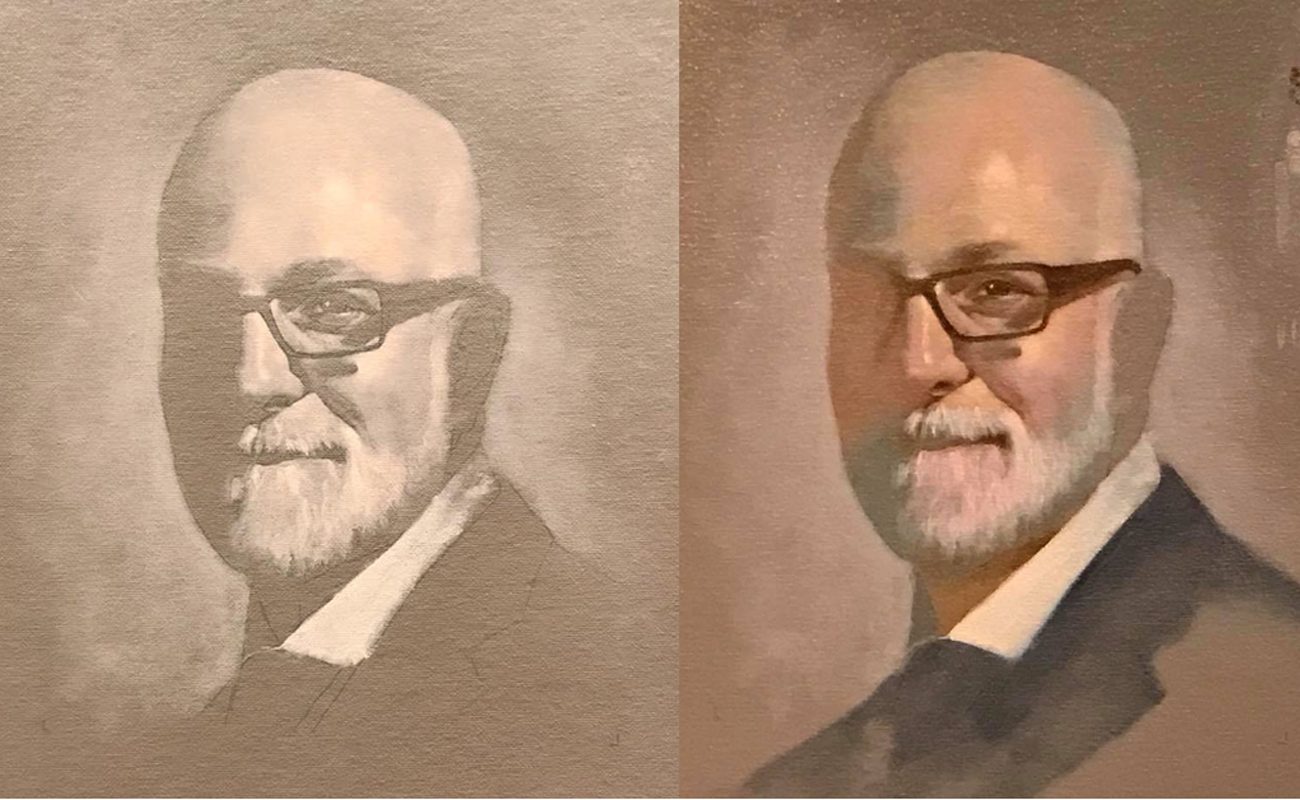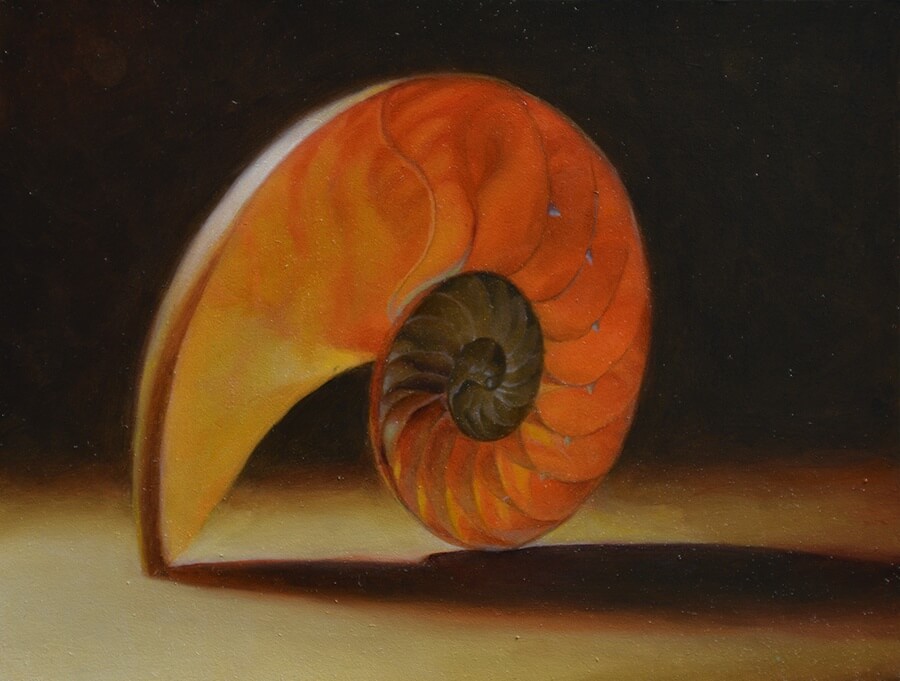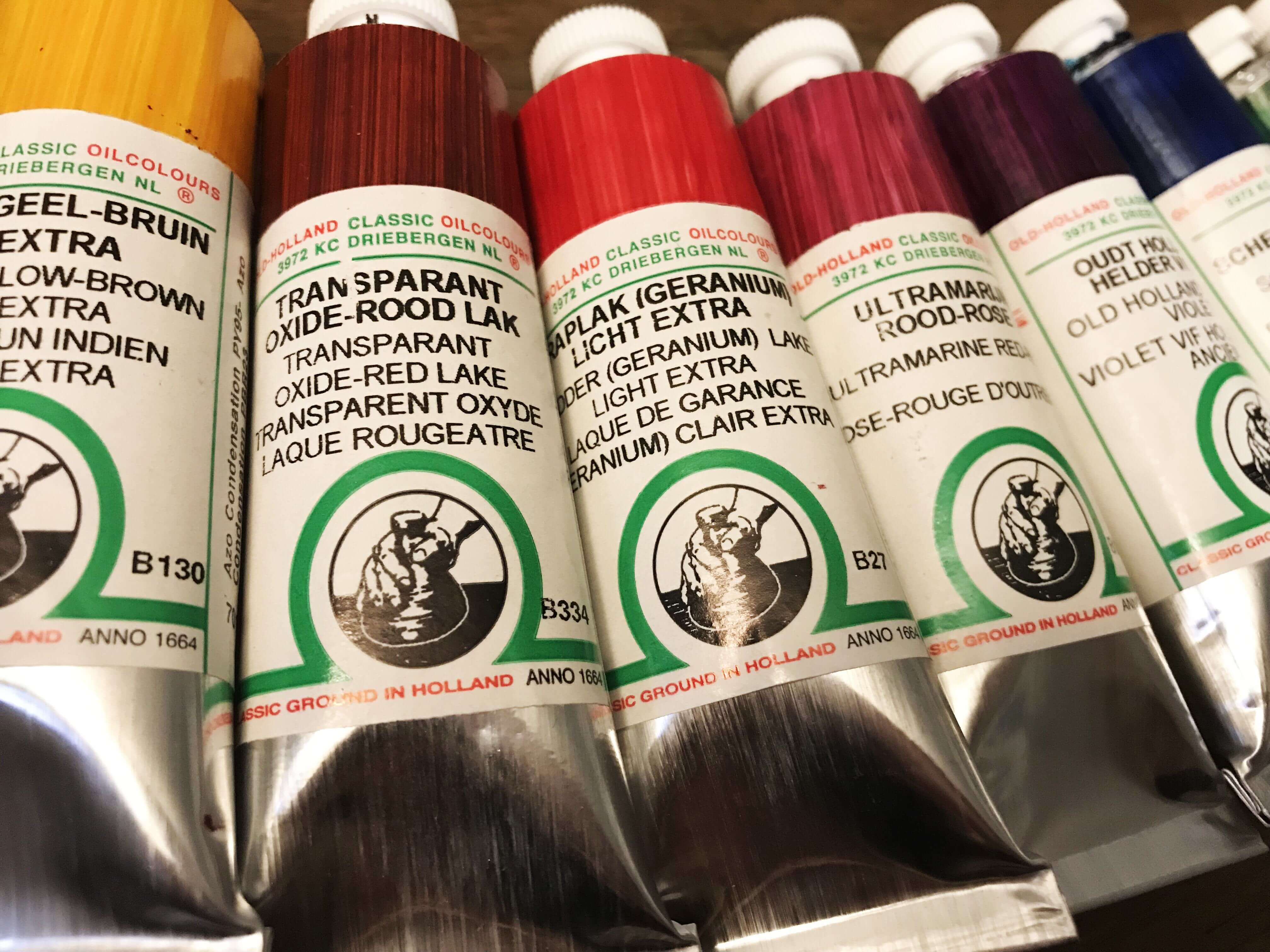
Some of the Old Holland glazing colors used by the Evolve Program
Learning how to glaze an oil painting will increase the depth and intensify colors in a painting. It can take your work from flat to luminous and glowing.
Simply described, glaze refers to transparent paint that sits on top of opaque paint. It gives the paint beneath it a different effect to the viewer.
More...
Glazes placed on top of dry paint do not physically mix with the colors below. Instead, the glaze tints the paint below it and the colors optically mix to give a beautiful depth of color.
In this post, you will gain a sense of how to glaze an oil painting, the reasons behind it, and how the students in our realistic art program utilize glaze in their paintings!
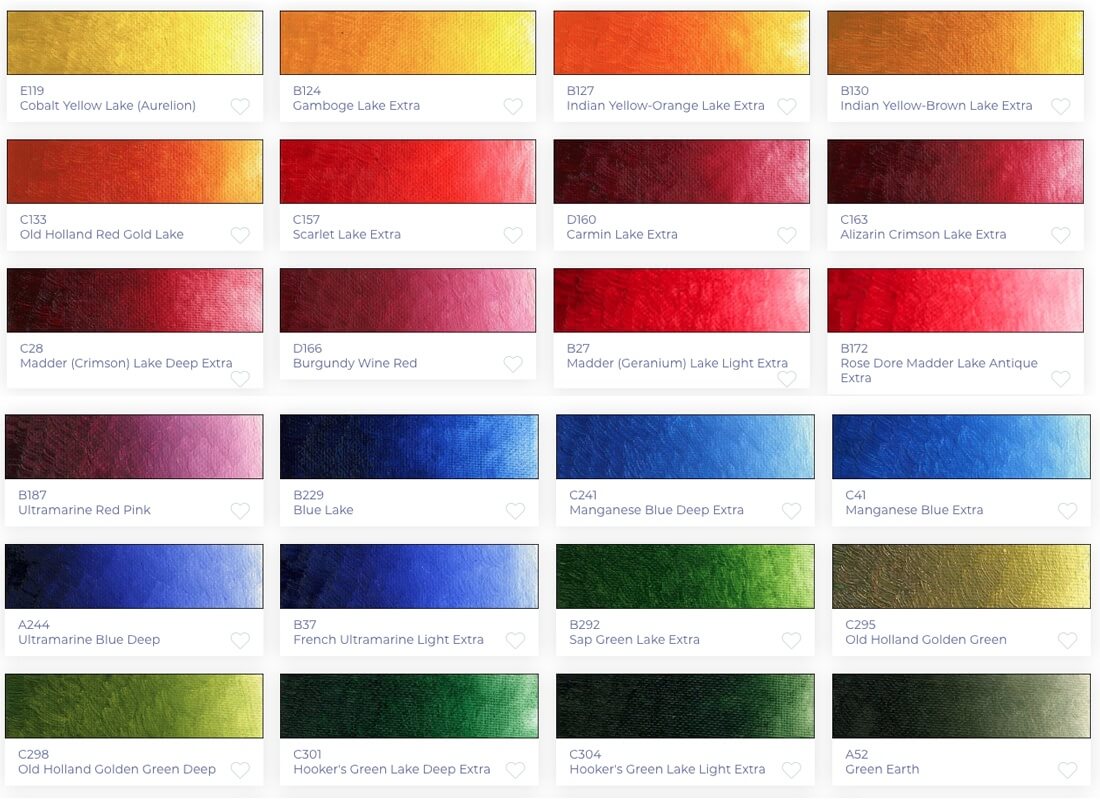
Transparent and semi-transparent colors made by Old Holland Classic Colours
What is Glaze Paint?
When learning how to glaze an oil painting, students must choose the correct paint. Paints suitable for glazing an oil painting have pigments that tend to be transparent with the addition of medium. Every paint pigment, by nature, becomes transparent, semitransparent, or opaque when mixed with oil.
Now a glaze is simply a suspension of pigment in oil. It has oil or medium with little specks of paint in it. As you build up the amount of oil into the paint, the pigment disperses, causing transparency.
Generally, blacks, blues, purples, and violets tend to appear transparent. Earth colors, like browns, tend to lean semitransparent to opaque, depending on their source. All cadmium and chrome colors, whites, and colors made with white cover opaquely.
Most paint manufacturers will put information on color permanence on each individual tube. Old Holland paint offers their buyers a full online color chart and organizes colors by permanence, from fully transparent to fully opaque.
Once you have settled on a palette of glazes to use, you can begin to work with these transparent paints to elevate your work.
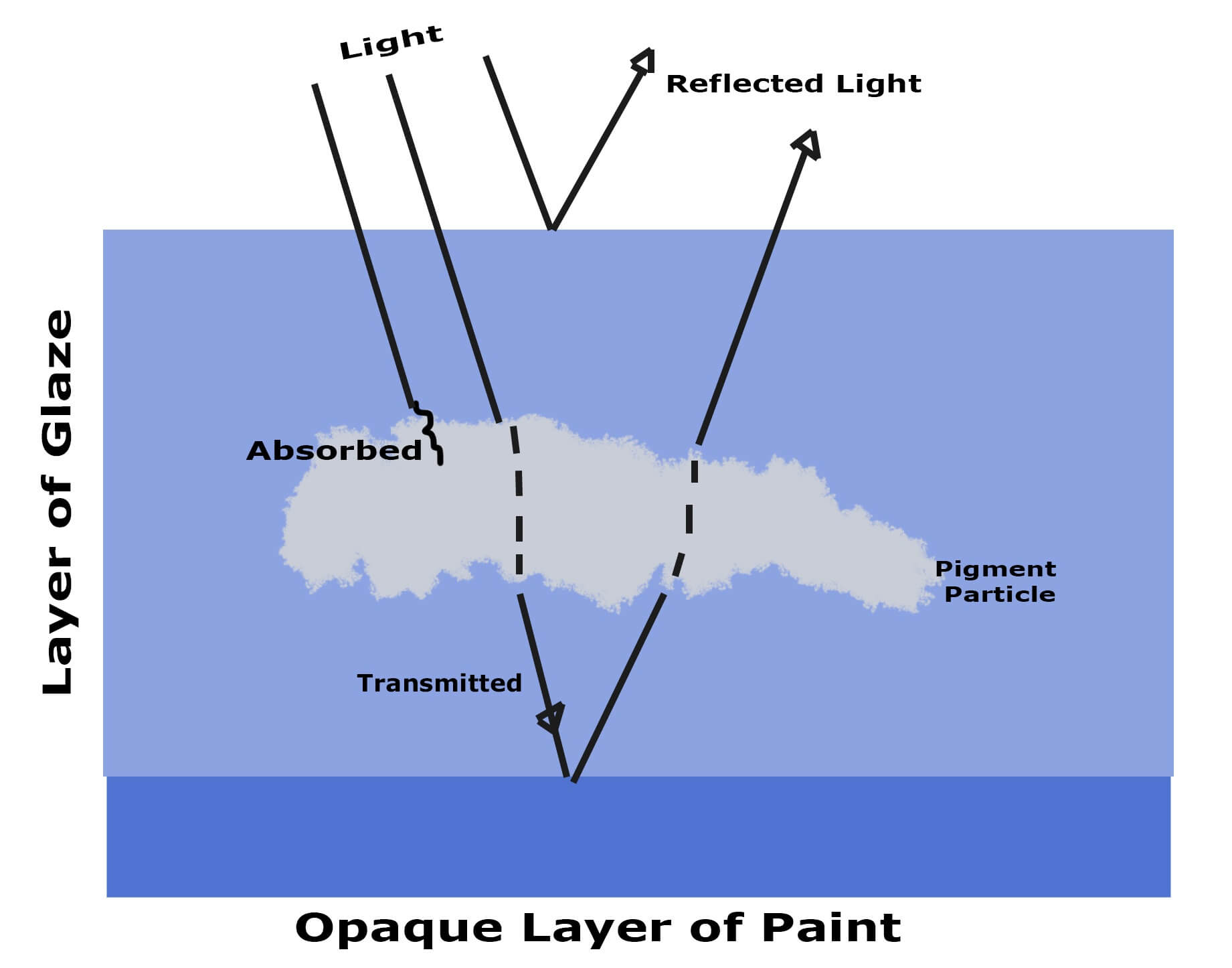
This illustration explains how light interacts with transparent and opaque paint to optically mix color.
How Glaze Works
In order to glaze an oil painting, you first must have an opaque base. Even if some of the paint allows the canvas to peak through in a vacant shadows technique, everything, even the shade of the canvas, is opaque.
This means that light bounces off the surface of the painting and reflects back to the viewer. This comprises what you see when looking at the painting.
Because glaze paints have dispersed pigment, causing transparency, light is able to permeate glaze paints. Unlike opaque paints, where the light bounces off, the light goes through the glaze.
When the light permeates the glaze, bounces off of the opaque paint, and back through the glaze again to hit your eyes. So the glaze is lit from behind as you look at it, causing a luminosity that is impossible to achieve any other way.
Tips on How to Glaze an Oil Painting
When you do a glaze on top of opaque paint, you are adding color, similar to colorizing a black and white photograph. So we take something that looked monochrome and begin to add color.
Artists must realize that glaze colors will always interact with the medium they become mixed with for fluidity and the opaque paint beneath them. If linseed oil is used to stretch the paint, it may add a warm tint to the paint. If an artist lays down yellow glaze upon a blue opaque base, the result will appear green as optical mixing occurs.
This optical mixing adds complexity to glazing perhaps more difficult than the actual application of paint. Learning how to glaze an oil painting requires a calculated understanding of what you wish to achieve before you begin to paint. All of your opaque passes must take into account what the glazes will do.
Glazing requires a calculated understanding of what you wish to achieve before you begin to paint.
A layer of alkyd must be placed between opaque paint and the glazes. So once the opaque layers dry, a sealing layer of alkyd will act as an isolating layer, preventing the glazes from sinking into or lifting up the opaque paint. This is also helpful for students, who can wipe the glaze off of the surface as they are learning.
As you mix the glaze, considering the medium will help the painting to succeed. In our Evolve painting program, we teach our students to use a 50/50 mixture of linseed oil and alkyd. This mixture enables quick drying without excessive oil. If you use too much linseed oil, the glazes will bead up as you work and increase the drying time, allowing dust to settle into your work. Using alkyd alone will cause the glaze to dry as you work. So a 50/50 mixture of the two gives students a perfect combination.
These technical tips, paired with planning before beginning to glaze, will enable you to create a beautiful luminosity and color in any painting! If you've found your paintings appear flat when try, learning how to glaze an oil painting is what you need to learn next!
Final Thoughts on How to Glaze an Oil Painting
Before a student begins to glaze, it is critical that they know where the glaze is needed and have a plan. Of course, as our Evolve students learn we guide them in how to know where the glaze is needed and teach them how to make proper plans.
Once an artist begins to understand where the glaze is needed and the best way to place it without multiple passes, their paintings begin to take on a new life.
Continuous adjustments after the initial application diminish the beauty of the glaze. The paint can be manipulated once it is down, but if you can manage twenty brushstrokes, don’t do twenty-one.
Less is more, particularly in the case of glazing. Once this is embraced, students can begin to use glaze to increase the luminosity and beauty of their paintings.
FAQ: How to Glaze an Oil Painting
Glazing is a technique used to create the illusion of depth and dimensionality. It’s also known as “painting on glass,” but that doesn’t really do it justice because glaze isn’t just painted over the top of the canvas. Glaze is applied to the entire canvas, creating a translucent effect. When properly done, the glaze creates a three-dimensional look that makes the viewer feel like he or she is looking at something real.
Glazing is another tool that you can use to expand the possibilities for your artwork. Glazing is not necessary to create a realistic painting, but when it comes to if you should or shouldn't do it, first make sure you know what you are doing and then use the technique to enhance your work.
Glazing techniques are used to create a variety of effects. The most common ones include: glazes, washes, and stains. They can all be applied at any time during the painting process.
Some other techniques that you may want to look at is how to varnish an oil painting - used to really make your painting pop once you are finished, and after that learn how to photograph oil paintings so they look great for posting online or sending to your buyers.

